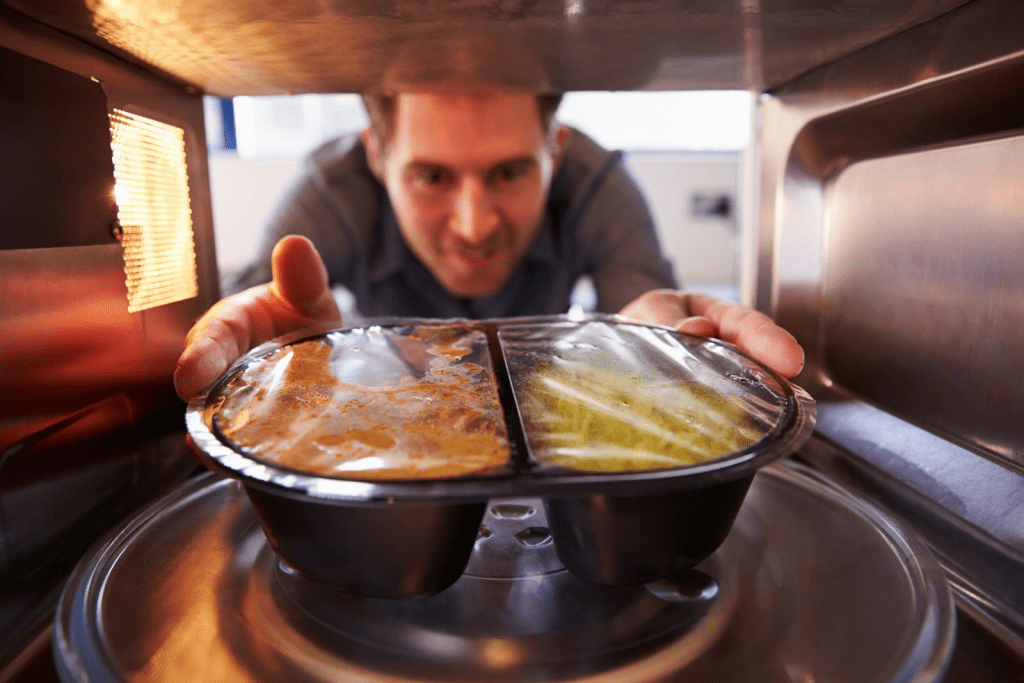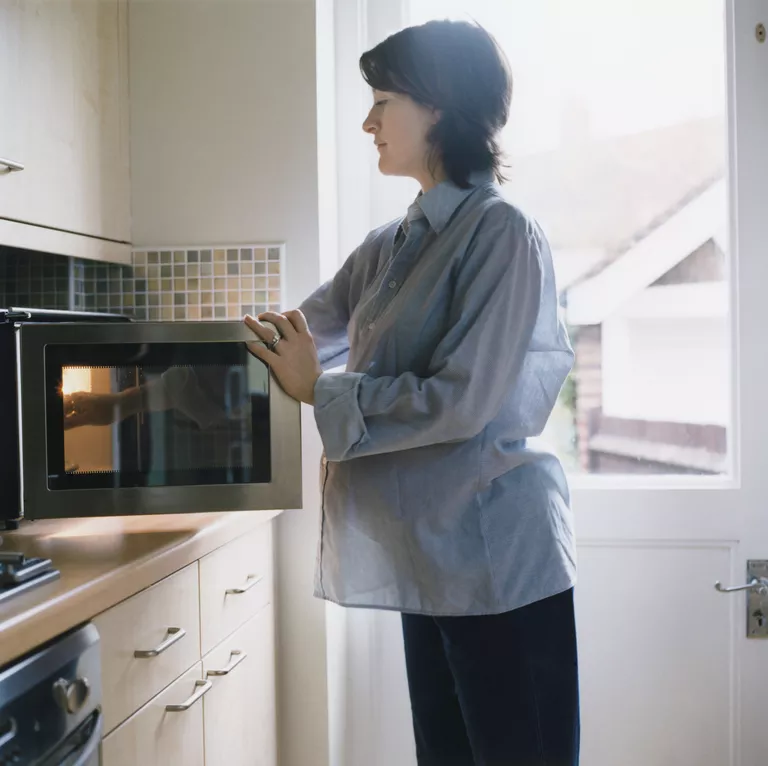When my grandmother mentioned that she believed microwaved food was harmful to her health, I didn’t know what to say. Microwaves are so common in modern kitchens that it’s easy to assume they’re entirely safe. But her concerns made me wonder—could there be any truth to her worries?
How Do Microwaves Actually Work?

Microwave ovens cook food by emitting electromagnetic radiation, specifically microwaves, which are a type of non-ionizing radiation. These microwaves cause water molecules in food to vibrate, creating heat that cooks the food. This is why microwaves work so quickly—they’re essentially heating food from the inside out by targeting its water content.
The Science Behind Microwaving Food
Many people worry about radiation when they hear the term “microwave,” but it’s important to understand that the radiation involved in microwaving is not the same as what’s used in X-rays or nuclear reactors. Microwave ovens use non-ionizing radiation, which means it doesn’t carry enough energy to remove electrons from atoms or damage DNA. This makes microwaves fundamentally different from the ionizing radiation that can be harmful.
In fact, when used properly, microwaves are one of the safer cooking methods. They cook food quickly and evenly, which can reduce the chances of nutrient loss and minimize the formation of harmful compounds that sometimes develop in other high-heat cooking methods.
Common Myths About Microwaving Food
Despite the science behind microwaves, several myths persist. Let’s look at some of the most common misconceptions and why they don’t hold up under scrutiny.
1. Microwaved Food Becomes Radioactive
This is a myth. Since microwaves use non-ionizing radiation, they don’t alter the atomic structure of food. Once the microwave stops, so does the radiation—there’s no lingering effect. Microwaved food is no more radioactive than any food cooked on a stove or in an oven.
2. Microwaving Food Destroys Nutrients
Microwave cooking actually preserves more nutrients than some other cooking methods. For example, boiling vegetables can cause water-soluble vitamins (like vitamin C) to leach out into the water, but microwaving doesn’t require as much water. The shorter cooking time also means that nutrients aren’t exposed to heat for long, helping them remain intact.
3. Microwave Radiation Leaks Are Dangerous
Microwave ovens are carefully regulated by organizations like the FDA, which sets strict safety standards. Modern microwave ovens are designed to prevent radiation leaks, using metal enclosures that keep the microwaves contained. The only time microwaves might leak radiation is if the appliance is damaged, such as a broken door or compromised seal.
The Health Benefits of Microwaving Food
Believe it or not, using a microwave can actually benefit your health when done correctly. Here’s how:
1. Retains Nutrients Better
Because microwaves cook food so quickly, they help retain more nutrients compared to methods that involve long cooking times. This is particularly true for vegetables, which retain more of their vitamin content when microwaved. For example, broccoli and spinach retain more of their antioxidants when microwaved versus boiled or steamed.
2. Reduces the Formation of Harmful Compounds

When foods are grilled or fried, they can develop harmful compounds such as acrylamide (in starchy foods) and heterocyclic amines (in meats), both of which have been linked to cancer in animal studies. Since microwaving doesn’t use direct heat in the same way, it avoids forming these potentially dangerous compounds, making it a healthier choice for certain foods.
3. Helps with Weight Control
Microwaving meals can support healthier eating habits. Since microwaves make it easy to prepare single portions, they can help with portion control and reduce the temptation to overeat. This is particularly helpful for those looking to manage their weight by controlling serving sizes and avoiding excessive oils and fats in cooking.
Tips for Safe Microwaving
While microwaving is safe, certain practices can help you make the most of this kitchen appliance. Here are some best practices to ensure your microwaved food is safe and nutritious:
1. Use Microwave-Safe Containers
Avoid using plastic containers unless they’re labeled microwave-safe. Some plastics can leach harmful chemicals, like BPA, into your food when heated. Stick to glass, ceramic, or BPA-free containers to avoid these risks. When in doubt, use microwave-safe labels as your guide.
2. Stir and Rotate Your Food

Microwaves can create uneven hot and cold spots in food, which is why stirring and rotating are crucial. Mixing food halfway through the cooking time ensures even heat distribution, reducing the risk of undercooked sections that can harbor bacteria.
3. Allow Food to Stand After Cooking
Letting microwaved food sit for a few minutes after cooking allows the heat to continue dispersing, killing any remaining bacteria and ensuring the food is thoroughly cooked. This “standing time” is especially important for foods like meats and frozen meals.
4. Avoid Heating in Styrofoam and Other Non-Microwave-Safe Materials
Styrofoam and other non-microwave-safe materials can release toxic chemicals into food when heated. Always double-check the label on any container or plate you’re using to make sure it’s safe for microwave use.
What Do Health Experts Say?
According to health experts and agencies like the FDA, microwaved food is safe for consumption when you follow recommended guidelines. The FDA oversees the manufacture of microwaves, ensuring that they meet strict safety standards. Moreover, studies continue to show that microwaving, as a form of cooking, retains more nutrients than other methods, especially when it comes to vegetables.
Dr. Ruth MacDonald, a food science expert, points out that while microwave ovens cook food differently than traditional methods, they don’t create harmful compounds, nor do they strip food of its nutrients. In fact, she recommends microwaving as a quick and healthy cooking option for busy people.
Addressing Concerns Respectfully: How to Talk to Your Grandmother

Respecting your grandmother’s concerns while sharing factual information can lead to a constructive conversation. Here are some ways to approach this:
- Acknowledge Her Concerns: Start by validating her worries. You might say, “I understand why you’d be concerned about microwaves. A lot of people have similar questions.”
- Share What You’ve Learned: Explain the science behind microwaves and how they work. Mention that microwaves use a type of radiation that’s safe and different from the kind we associate with danger.
- Encourage Safe Microwave Practices: Suggest using glass or ceramic containers, avoiding plastics, and allowing food to stand for a few minutes after microwaving. These tips show that you’re taking her concerns seriously while advocating for safe microwave use.
Conclusion: A Practical and Safe Tool for Modern Kitchens
While it’s natural to question the safety of newer technologies, microwaves have been thoroughly tested and are safe to use when you follow best practices. They offer a fast, convenient, and healthy way to cook food while preserving nutrients. So, the next time you chat with your grandmother, you can assure her that, with a few safety tips, microwaved food can be a part of a healthy diet—without compromising health or nutrition.


